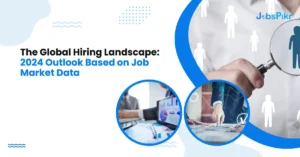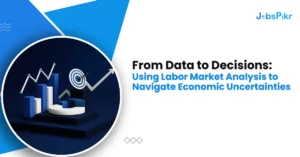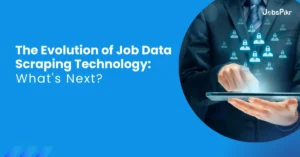There are job portals. And then there’s Linkedin. The search intent of the term “LinkedIn” on search engines has almost doubled in the past decade. Rightly so, not a lot of job boards match potential candidates to jobs the way LinkedIn does. LinkedIn uses job wrapping super successfully to cutting through the noise of half a billion LinkedIn users. Landing in a potential candidate search result is not just a happy coincidence.
Let us then crack the code. The code that sets LinkedIn apart from other job boards and how you can make your job board just as good with the help of premium job scraping services.
How LinkedIn Job Matching Works
Ranking in the upper rungs of a LinkedIn search requires optimizing for both LinkedIn’s tech and the human inclinations of the recruiters. The advanced algorithm considers the overall activities of the user account and studies where the interaction is the highest.
- Headline and Job Titles
The profile headline and recent job title are probably allotted the most weightage and need to be very specific so that it seamlessly matches the searcher’s intent. An employer is highly likely to begin their search with a simple search string: specific job titles.
The headline works like an elevator pitch. It is the first thing people invariably read. It is usually the first filter employers use.
- Keywords
How do recruiters look for something niche on their broad list of KRA and experiences listed? LinkedIn Recruiters built-in skills is godsend for employers who want to add and advanced layer of filtering.
For example, you go into a keyword search and put in different buzzwords that you pull from the specific job description. If you are looking for a front-end developer, you could put in Javascript, CSS, HTML, HTML5 so on and so forth.
- Location
Candidates living in the vicinity have a higher chance of accepting your job offer than the one living on the other coast. Right skills don’t cut it anymore, selecting a candidate with the right skills in the shortest possible time is the need of the hour.
All said and done, one of the most powerful tools that draw employers to LinkedIn as a job board is its job wrapping. This tool allows recruiters to automatically post jobs from their career pages into LinkedIn job vacancies. Pretty neat. But how does it work?
What is LinkedIn’s Job Wrapping Tool?
LinkedIn’s job wrapping tool automatically crawls and lists job listings from employers’ recruitment software onto their pages: ATS and/or their websites. The wrapping tool also lets recruiters assign job slots and setup a whole lot of selection criteria for filtering the jobs that are posted on LinkedIn.
There are two types of job wrapping services on offer: job wrapping plus and job wrapping auto. Job wrapping plus allows employers to gain mileage on their job postings. Whereas, job wrapping auto is a simpler version of job wrapping plus. It automatically posts jobs uploaded on various channels. Only relevant and current openings crawled, the job wrapper keeps deleting antiquated postings and renews them.
This is the real deal. This is why other job boards need to up their ante when it comes to job wrapping.
Why should Job Boards Upgrade their Job Wrapping Systems?
Any job wrapping tool is employed to save time and energy to absolutely nullify human error. To match the high and mighty standards that LinkedIn has set, job wrapping services such as the ones provided by JobsPikr has become essential. These premium tools almost always match the right candidate to the right job to stay ahead in the cut-throat world of recruitment.
How can you beat LinkedIn at its own game? Figure out the loopholes and plug those gaps. For instance, LinkedIn’s job slots can get pretty cumbersome for a large organization. If the organization is fairly big, with multiple departments and sub-departments, employers will need to buy multiple job slots. Prioritizing each job in each section and sub-section in each department is a major drain of resources and time and energy. Hence, the opportunity for your job board spotted.
What We can Learn from LinkedIn
- Upgrade your technology: Do exactly what LinkedIn is doing. Just better. Employ the services of a premium job wrapping and automated tool. The use of Artificial Intelligence in candidate mapping is the future. A job wrapper will crawl the relevant data from all the career pages of all the companies in the world. The entire process: crawling, formatting, posting, updating, deleting, and renewing is taken care of through job automation. In fact, the best part is that even duplicate content tackled.
- Consistency and efficiency are the keys: Job wrapping and automating services are also cheaper than having an actual human do it. Plus, it is consistent in look and feel and doesn’t jostle employees. Parity is maintained to make an uphill task like applying to jobs very easy and intuitive. You will always have an influx of employers and candidates, does not get any better.
- Interactive platforms: A job board can always dial it up a notch. Especially when the virtual is the new normal. They could have a mini forum in-built where interactive sessions between employee and employer can be arranged. It is a great ice breaker and you get a great idea about the jobs most in-demand, salaries, work culture, etc.
- Direct messaging: It could also have a direct messaging option where you can reach out and establish a professional connection and set the ball rolling.
- Content is king: Maybe your current opening doesn’t sing to a candidate. We could always have an option where they could refer a friend and with each referral the visibility of their profile increases. This will help draw candidates to the job board who otherwise are passive participants.
It took LinkedIn years to perfect the candidate matching algorithm, thanks to job wrapping. How your job board can build on that is primarily by integrating it with a premium service to at least match LinkedIn if not beat. It is really simple, either keep up with the times and see what the giants are up to or get lost in the cacophony of the world wide web. With more than 20 million open jobs on the largest recruiting platform. It is no surprise to find out that 87% of recruiters regularly use LinkedIn. In order to succeed, you have to see what the competitor is doing. And do it better.




